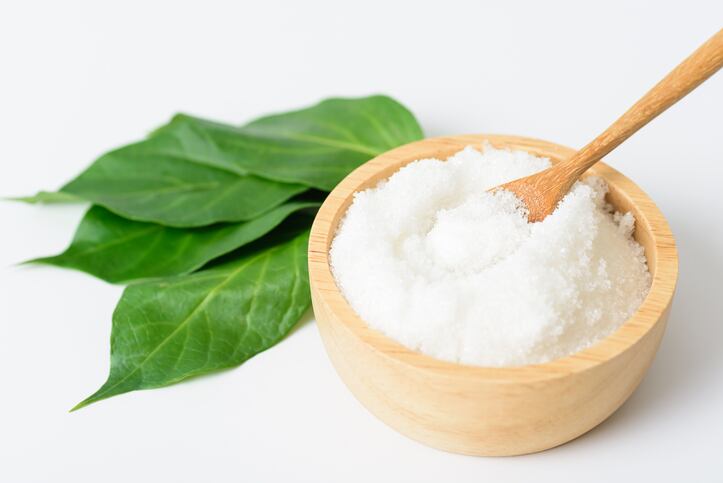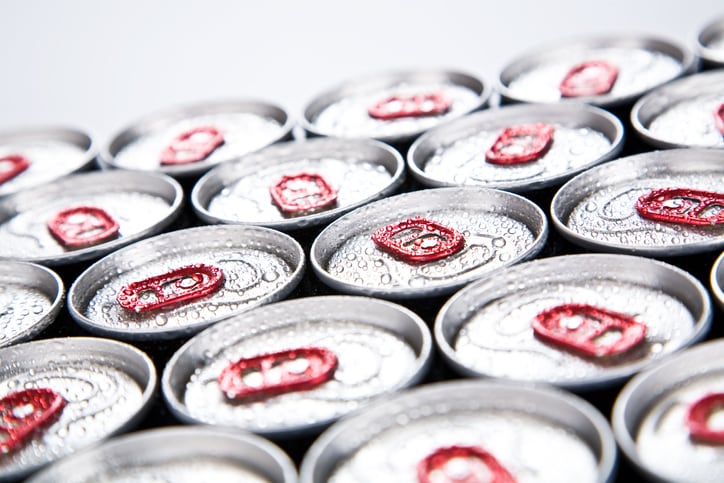Thaumatin I and thaumatin II
Synthetic biology R&D company Conagen has just announced the successful scale-up production of two new high-intensity sweeteners, thaumatin I and thaumatin II.
The development will expand commercial partner Sweegen’s sugar reduction solutions.
Thaumatin is a group of proteins found in the fruits of the tropical plant Thaumatococcus danielli. Each protein, thaumatin I and thaumatin II, varies slightly in sweetness profiles. Both proteins have been evaluated as 100,000 times sweeter than sugar on a molar basis and 3,000 times sweeter on a weight basis. The high sweetness factor can translate into a strategic cost-effective sugar reduction solution for brands seeking to get the most out of a natural sweetener.
Regulatory approval for thaumatin as natural sweeteners has passed in the European Union (E957), Israel, and Japan. In the United States, it is generally recognized as safe as a flavoring agent (FEMA GRAS 3732).
Stevia and flavor blend
Cargill is now offering its EverSweet + ClearFlo tech in North America.
The new sweetener system brings together the company’s stevia sweetener with a natural flavor, which features flavor modification, improved solubility and stability in formulations, and faster dissolution.
Using EverSweet’s quick sweetness onset and high sweetness potency as a foundation, EverSweet + ClearFlo creates what Cargill said is an “even more sugar-like experience”, especially at higher concentrations. The new system also helps manage off flavors from other ingredients used in formulation, be it earthy notes from proteins, bitterness from caffeine or metallic tastes from potassium chloride.
Cargill said while Reb M stevia products like EverSweet provide the best stevia sweetness profile, they can be limited by a lower solubility maximum. This comes into play for applications using concentrates to deliver sweetness, such as throw syrups in beverages. EverSweet + ClearFlo together boost solubility, enabling more concentrated solutions than Reb M alone. The improved solubility opens the door for stevia to be used in applications like foodservice fountain drinks and flavor syrups.
The new sweetener system also results in improved dissolution properties. Unlike standalone Reb M sweeteners, EverSweet + ClearFlo dissolves in water at ambient temperatures. For beverage processing facilities without heating capabilities, Cargill said this is a significant advance. The company said the sweetener system’s near-instantaneous dissolution also enables faster manufacturing times.
High intensity brazzein sweetener
Sweegen has launched Ultratia, made from high intensity sweetener brazzein – a protein 500 to 2,000 sweeter than regular sugar, and which is found in the West African oubli fruit.
Ultratia is made in commercial quantities through microbial fermentation.
Unlike other high intensity sweeteners used to created reduced- and no-sugar products, brazzein “promises little to no bitter aftertaste and helps reduce sweet linger,” according to Sweegen.
In addition, as a protein, brazzein is heat and acid stable, easily soluble and viable across a wide pH range, meaning it will work in a variety of products, ranging from beverages to baked goods. It also is a good fit for products targeting consumers following the ketogenic or low-to-no carb diets and people with diabetes because it comes in as a zero on the glycemic index.
Sweetness modulators
Two new sweetness modulators from Icon Foods promise to smooth out the flavor profiles of popular sugar substitutes.
CitruSweet and ThauSweet, both made from natural extracts and several hundred times sweeter than sugar, overcome these challenges by boosting either the upfront or backend sweetness of sugar substitutes, like stevia and monk fruit, creating a technical effect that last the entire eating experience, according to the company..
ThauSweet, which is made from proteins in Katemfe fruit sourced from West Africa, can be up to 3,000 times sweeter than sugar – creating a stronger sweetness that lingers on the tongue upwards of five minutes – far outlasting the metallic, bitter or astringent flavors often associated with popular natural sweeteners after they peak.
CitruSweet, which is sourced the bioflavonoid naringin found in the inner peel of citrus fruits, is about 1,500 times sweeter than sugar, but unlike sugar and other sweeteners it starts out as slightly bitter but slowly builds a sensation of sweetness on the back of the palate over 30 to 45 seconds.
The result is a fuller overall flavor and, again, a lingering sweetness can cover lingering off-notes either from alternative sweeteners or other popular ingredients.
Sugar reduction for fruit juice
Better Juice’s enzymatic sugar reduction tech is due to make its debut in the coming months, following the completion of its first commercial deal with a US West Coast-based juice manufacturer.
Consumers still consider juice as a high sugar product and are looking at options with a lower sugar profile.
Better Juice said it has unlocked the first meaningful solution for the industry by providing a way for manufacturers to reduce the sugar content of fruit juice between 30% to 80% without disrupting the rest of the nutrition profile (e.g. vitamins and minerals) while intensifying the fruit flavor of the juice."
Through its patented enzymatic sugar reduction process, Better Juice can convert common sources of sugar (i.e. fructose, glucose, sucrose) in natural fruit juice into non-digestible dietary fibers. The continuous flow technology and equipment (manufactured by GEA), which can process juice at up to 200 liters per hour, integrates seamlessly into existing juice product lines.
While Better Juice said its technology can achieve up to 80% sugar reduction, the ideal "sweet spot" is between 25% to 30%. The first retail products will feature a 30% reduction in sugar.



